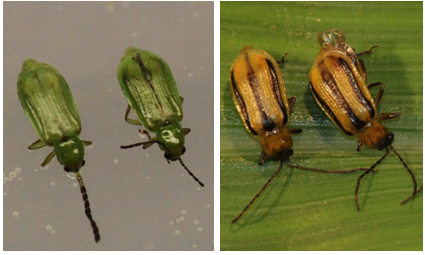The 2018 winter was cold—very cold. Throughout most of South Dakota, low temperatures were at or below 14°F for 60-80 days with many areas experiencing 2-3 weeks with subzero temperatures. As we know, the insects that overwinter in South Dakota are well adapted to our cold winter temperatures, but even they have their limits.
Northern & Western Corn Rootworms
Two insects that are notorious for being able to overwinter in South Dakota are the northern and western corn rootworms. These insects overwinter as eggs in the soil at depths that range from 3-6 inches.
Cold Survivability
Previous research indicates that the two species of corn rootworms differ on their ability to survive cold temperatures. Generally, northern corn rootworms are more durable to cold temperatures, and a hatch rate of 80% can still be observed when the temperature reaches 0.5°F. However, the duration of the cold period is another factor that impacts survivability. Longer periods of cold temperatures can dramatically reduce corn rootworm egg hatch. For South Dakota, the average low temperature throughout the winter was 13°F. Based on this, the expected northern corn rootworm survival is between 0-30% and the expected western corn rootworm survival is 0%.
Other factors that can affect the winter survivability of corn rootworm eggs include snow cover and soil moisture at the time of the cold temperatures. In areas where snow cover was present, the corn rootworm egg hatch will probably be increased when compared to areas where there wasn’t snow cover. Areas with higher soil moisture will have reduced corn rootworm hatch as well.
Although these are estimates, the cold winter probably did have a negative effect on corn rootworm eggs and we will likely see a reduced hatch in 2018. At this point, we still recommend using hybrids containing Bt traits or another management option to ensure that root injury doesn’t occur. Time will tell, and we will find out what really happened when adult emergence occurs in July-August.






